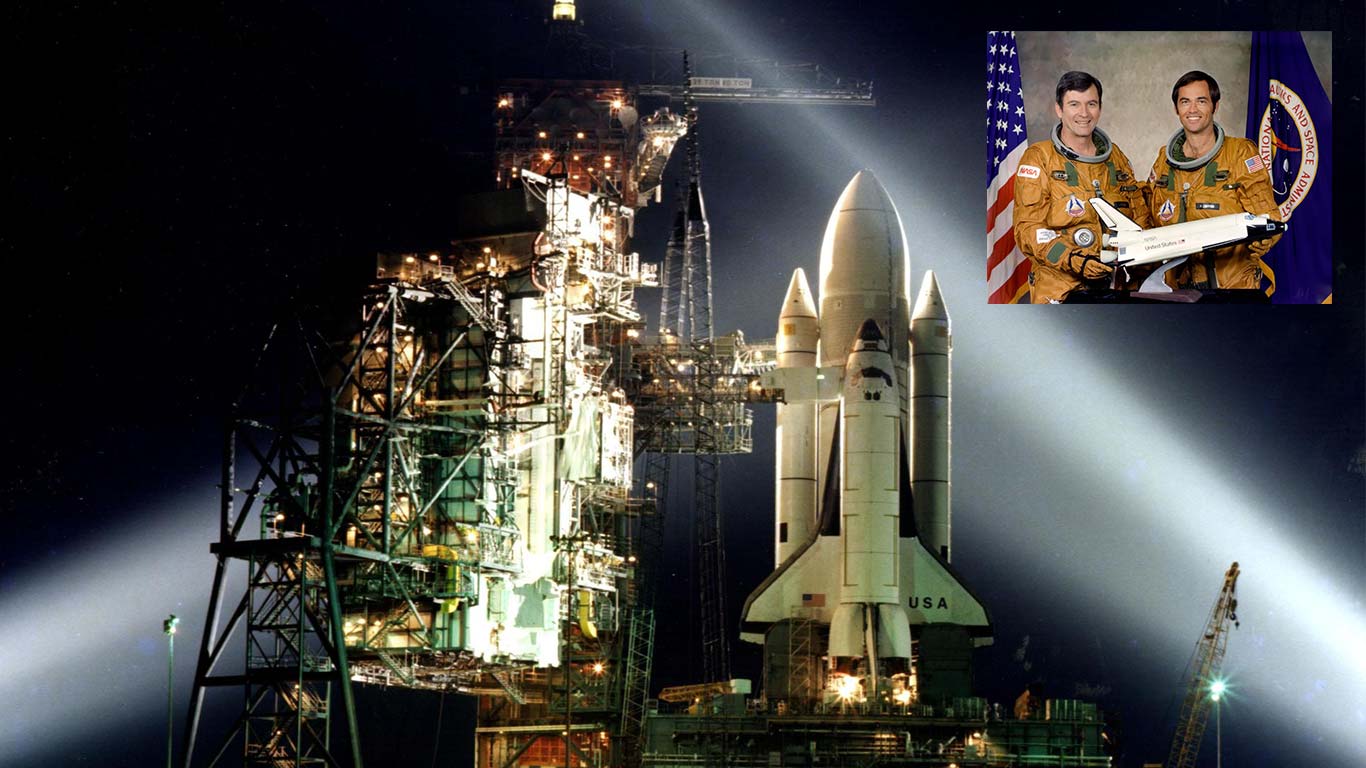STS-1 (Space Transportation System-1) was the first orbital spaceflight of NASA's Space Shuttle program. The first orbiter, Columbia, launched on April 12, 1981, and returned on April 14, 1981, 54.5 hours later, having orbited the Earth 37 times.
Launch of the First Space Shuttle Mission
On April 12, 1981, a new era dawned in space exploration with the launch of the very first Space Shuttle mission, STS-1. This historic event, occurring exactly 20 years after Yuri Gagarin's pioneering flight, marked a significant leap forward in human space travel.
Lifting Off a Dream:
The mission's workhorse, the majestic Space Shuttle Columbia, roared to life at 7:00 AM EST from Launch Complex 39 at Kennedy Space Center. Aboard were veteran astronauts John Young, the mission commander, and Robert Crippen, the pilot. This two-man crew embarked on a daring test flight, ushering in a revolutionary reusable spacecraft concept.
A Pioneering Mission:
Unlike previous capsules designed for single-use journeys, the Space Shuttle promised a reusable launch vehicle capable of carrying astronauts and cargo into orbit and then returning to Earth for landings on runways. This reusability aspect drastically reduced spaceflight costs, paving the way for a more sustainable and ambitious space program.
A Moment of Uncertainty:
The launch wasn't without its tense moments. Two days prior, a launch attempt was scrubbed due to technical glitches with Columbia's onboard computers. But on this designated day, everything went according to plan. The powerful twin Solid Rocket Boosters ignited, followed by the main engines of the orbiter, propelling Columbia into a fiery ascent towards the heavens.
A Historic Flight:
For 54.5 hours, Columbia gracefully orbited Earth 37 times, undergoing a battery of tests to evaluate the spacecraft's systems and performance. This critical mission aimed to assess the shuttle's heat shield, flexibility, and overall functionality in space.
A New Chapter in Spaceflight:
On April 14, 1981, Columbia made a successful unpowered landing on a dry lakebed runway at Edwards Air Force Base in California. The mission's triumph marked a new chapter in spaceflight, demonstrating the viability of the reusable Space Shuttle program. This success paved the way for a future filled with scientific exploration, satellite deployment, and historic spacewalks.
A Legacy of Exploration:
The STS-1 mission left an undeniable mark on history. It ignited public imagination and ushered in a period of sustained American dominance in space exploration. The Space Shuttle program went on to make significant contributions to science and technology, launching satellites, conducting groundbreaking research, and inspiring countless future astronauts.
Let us celebrate the incredible feat of human ingenuity and exploration that was the dawn of a new era with the STS-1 crew on this day.
